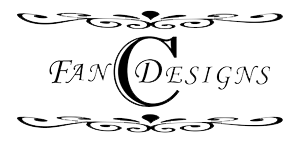When you think about your dream wedding dress, what comes to mind? Perhaps it’s a flowing A-line silhouette, a figure-hugging mermaid style, or maybe a romantic ball gown that makes you feel like royalty. Whatever your vision, it’s fascinating to consider how dramatically wedding dress styles have evolved over the decades and how each era has contributed to the beautiful diversity of options available to today’s brides of all sizes and shapes.
The Roaring Twenties: Breaking Free from Tradition
The 1920s marked a revolutionary shift in bridal fashion. Gone were the restrictive Victorian corsets and heavy fabrics. Instead, brides embraced dropped waistlines, shorter hemlines, and lighter materials like silk and chiffon. What’s particularly inspiring about 1920s wedding fashion is how it challenged conventional beauty standards. The straight, boyish silhouette meant that brides of various body types could feel confident and fashionable, teaching us that bridal beauty isn’t about conforming to one ideal.
The Glamorous 1930s-1940s: Hollywood Influence
The 1930s brought Old Hollywood glamour to wedding fashion, with bias-cut gowns that skimmed the body’s natural curves. These sophisticated dresses were incredibly flattering for curvy figures, creating smooth lines that enhanced rather than concealed natural curves. The 1940s, influenced by wartime practicality, saw shorter, more practical dresses, a sustainable approach we’re seeing return today.
The Fabulous 1950s: The Birth of the Princess Dress
Post-war optimism gave rise to the iconic 1950s wedding dress, characterized by full skirts supported by crinolines and fitted bodices. This decade established many “traditional” wedding dress elements we still love today. The beauty of 1950s fashion lies in its celebration of femininity in all forms. The full skirt was universally flattering, creating an hourglass silhouette that made every bride feel like royalty, regardless of size or shape.
The Revolutionary 1960s-1970s: Diversity and Natural Beauty
The swinging sixties brought shorter hemlines and mod style, while the 1970s celebrated natural beauty with flowing fabrics and bohemian details. These decades were groundbreaking in rejecting the “one size fits all” approach to bridal beauty. The variety of styles meant brides could choose dresses that reflected their personalities, whether they preferred mod mini dresses or flowing bohemian gowns with empire waists that celebrated natural curves and movement.
The Bold 1980s: Making a Statement
The 1980s were all about dramatic expression. Think puffed sleeves, elaborate beading, and voluminous skirts. While some might view this era as over-the-top, it was actually progressive in celebrating individual expression. The 1980s taught us that there’s no such thing as “too much” when it comes to feeling beautiful on your wedding day, proving that bridal fashion should be about personal expression, not conforming to others’ expectations.
The Minimalist 1990s and Beyond: Sleek Sophistication
The 1990s brought sleek, column-style dresses and simple elegance. This minimalist approach emphasized the importance of construction and perfect fit, principles essential when creating dresses for diverse body types. A well-fitted dress, regardless of its simplicity, can be incredibly flattering and confidence-boosting.
Today’s Inclusive Bridal Landscape
The 2000s through today have been characterized by unprecedented diversity in wedding dress styles. From vintage-inspired designs to modern minimalist gowns, from traditional ball gowns to non-traditional colored dresses, this era has truly embraced the idea that there’s no single “right” way to dress for your wedding.
Perhaps most importantly, this period has seen a growing emphasis on inclusivity and body positivity in bridal fashion. Designers have recognized that beautiful brides come in all shapes and sizes, creating collections that celebrate this diversity rather than trying to fit everyone into the same mold.
Contemporary bridal fashion embraces everything from classic ball gowns to sleek modern silhouettes, from traditional white to bold colors. The focus has shifted from following trends to finding the dress that makes you feel most like yourself, confident, beautiful, and ready to celebrate love.
The Future of Bridal Fashion
Looking ahead, bridal fashion continues evolving with increased emphasis on sustainability and customization. Most importantly, the future is inclusive. Today’s designers understand that beautiful wedding dresses should be available to all brides, regardless of size, budget, or personal style preferences.
The evolution of wedding dress fashion reflects broader changes in society’s understanding of beauty, femininity, and self-expression. Each decade has contributed valuable lessons about the importance of diversity, personal style, and body positivity in bridal fashion.
Whether you’re drawn to Old Hollywood glamour, 1950s romance, 1970s bohemian spirit, or contemporary modern elegance, remember that the best wedding dress is the one that makes you feel most like yourself. After all, your wedding day is about celebrating your unique love story, and your dress should reflect that beautiful individuality.
At Fan C Designs, we’re proud to be part of this rich tradition of bridal fashion evolution. Our collections celebrate the diversity and beauty of all brides, with special attention to our curvy bride collection that ensures every bride feels confident and stunning on her special day. From classic silhouettes inspired by decades past to contemporary designs, we believe every bride deserves a dress as unique and beautiful as her love story.
For more insights into bridal fashion and body-positive wedding planning tips, check out the rest of our blog!

